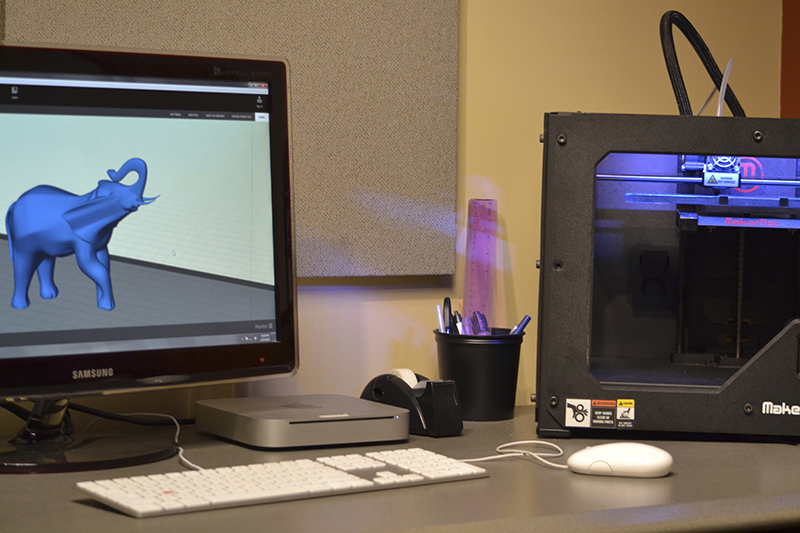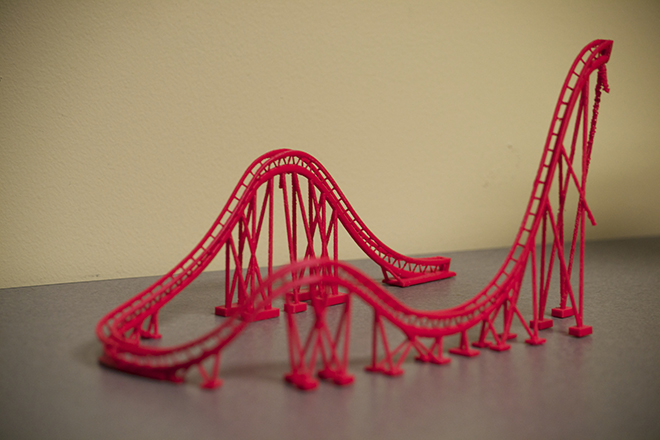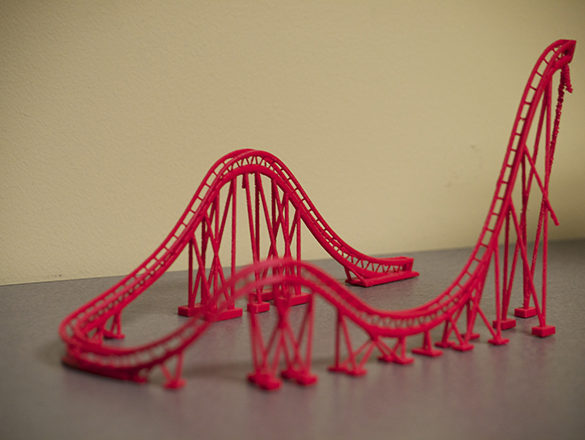By Holly Demaree

Things tend to break, and when they do, it is usually when you are trying to use them. Instead of searching for the part and then buying it, try printing another one or anything else that may be broken.
The process of 3D printing is called additive manufacturing. The printer uses software that captures 2D designs of an object and turns it into a 3D version. The type of material used to make a 3D item depends on what is being printed. The printer adds material to the object layer by layer. It is similar to the process of stalagmites and stalactites found in caves.
3-D printing in the industry and at home is complicated, and it is now even possible to recreate human organs or body parts. In April 2013, Dr. Paolo Macchiarini was able to print a trachea or windpipe for 2-year-old Hannah Warren. She was born without one and spent her entire life in the intensive care unit. By using her bone marrow, stem cells and plastic fibers, Macchiarini gave her a new life.
“One of the best aspects of 3D printing is rapid prototyping,” Andrew Arthur, Design Specialist for the Digital Corps said. “The big deal with 3D printing is you can design something that is rough, print it out, test it and if it works awesome, and if it doesn’t then you can just keep going through this prototyping process. It makes any special designers’ job easier because you have the ability for trial and error.”
In addition to medical innovations, the 3D printer is also making it easier to provide experts with the ability to test and tweak real objects until they reach their desired result. Plastic is the most common material used for 3D printing, but the printer can utilize much more. In fact, Harvard University was able to print synthetic sharkskin and intricately designed food.
At Ball State, the College of Architecture and Planning utilizes 3D printing to help students design.
“We just modeled an 1891 Baltimore thru truss bridge and it was originally pin constructed,” Carol Street, Archivist for Architectural Records at the drawings and documents archive said. “It was constructed with parts that are put together like a puzzle and then hot riveted. So that process enabled us to create it like they did in the factory, but on a 3D printer. So the students could put the bridge together while learning to read construction drawings in a fun way.”
As a result, the 3D printing process has decreased construction time and waste. The materials used to print and create buildings are recycled, which decreases the need for quarried stone and lumber.
However, the creation of the products via 3D printing causes a rise in demand for plastic. ABS and PLA filaments are two common types of plastics used to print products. When ABS is heated and melted, the printed object emits up to 200 billion particles per minute. According to research conducted by the Illinois Institute of Technology, particles can settle in the lungs or the bloodstream posing potential health risks, especially for those with asthma.
ABS filaments are not BPA free; but printers use them to create plates and utensils. BPA is an industrial chemical that has been used to make certain plastics and resins since the 1960s and contains epoxy resins. BPA is found in many plastic containers used for food and water, but the Food and Drug Administration said BPA in food at low levels is safe. Exposure to BPA is a concern because of possible health effects it may have on the brain, behavior and prostate gland of fetuses, infants and children.
The future of 3D printing has both positive and negative outcomes. What will take shape depends on the next idea and material used to print it.
Video by Brice Brenneman




